Abstract
A haploid sexual two-locus model of gene-culture coevolution is examined, in which a dichotomous phenotype subject to natural selection is transmitted vertically with probabilities dependent on the chosen parent's genotype and phenotype and the offspring's genotype. Stability conditions for the genetically monomorphic corner equilibria are obtained. In a specialization of this general model, one locus controls the transmission and the other controls the reception of adaptive information. The corner and edge equilibria of this doubly coevolutionary model are fully analyzed, and conditions for transmission and reception to coevolve are derived in terms of the efficiency of vertical transmission, the selective advantage gained from possessing the information, the costs of transmission and reception, and the recombination fraction between the two loci. Possible applications of the model are to the evolution of semantic alarm calls in vervet monkeys and the phonetic aspects of human language. In a third model with diploid genetics, we consider the initial increase of cultural transmission from a mutation-selection balance in which the adaptive phenotype is the consequence of a dominant gene at one locus. A second gene controls the transmission of the phenotype in such a way that a new mutant at this second locus permits learning of the adaptive phenotype from a parent who has it. This new mutant cannot increase when rare.
Full text
PDF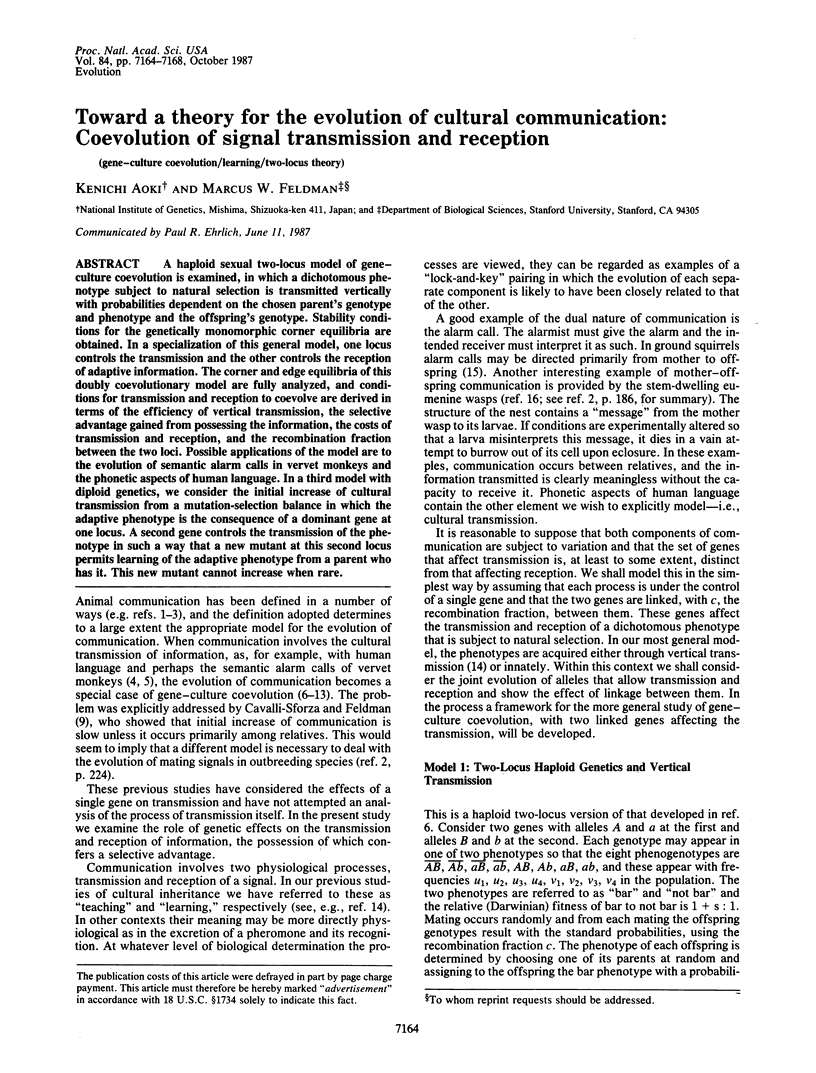
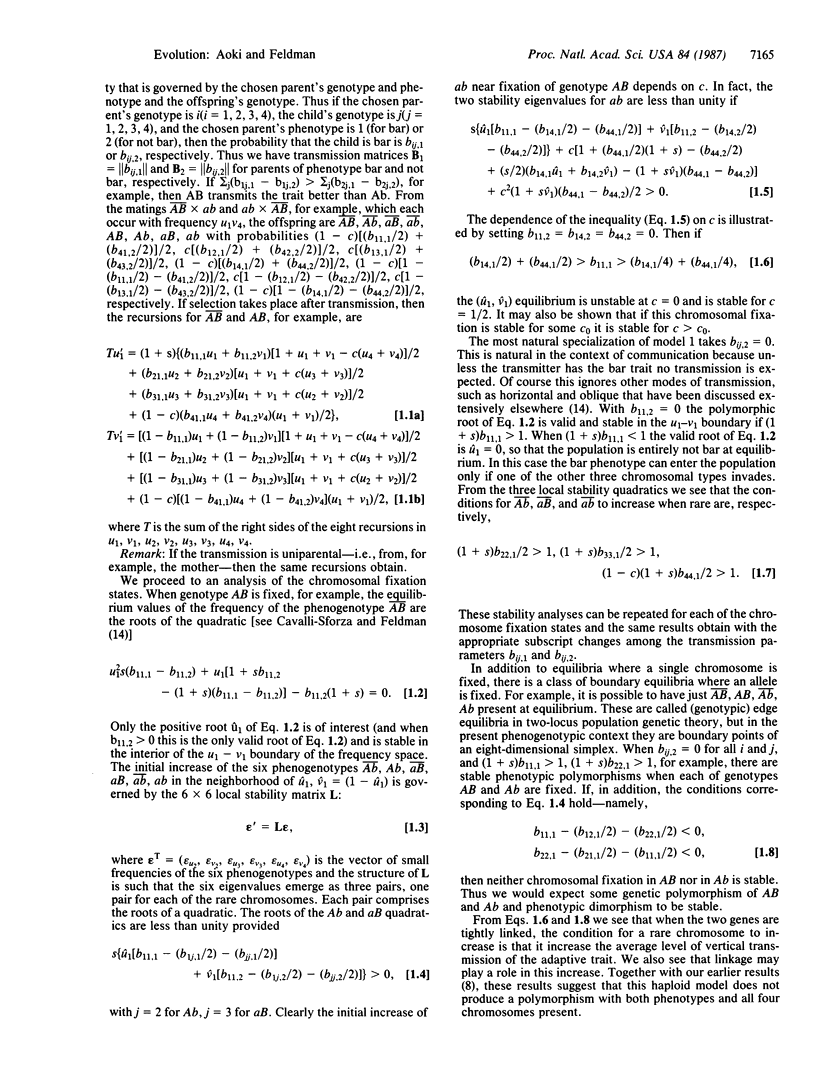
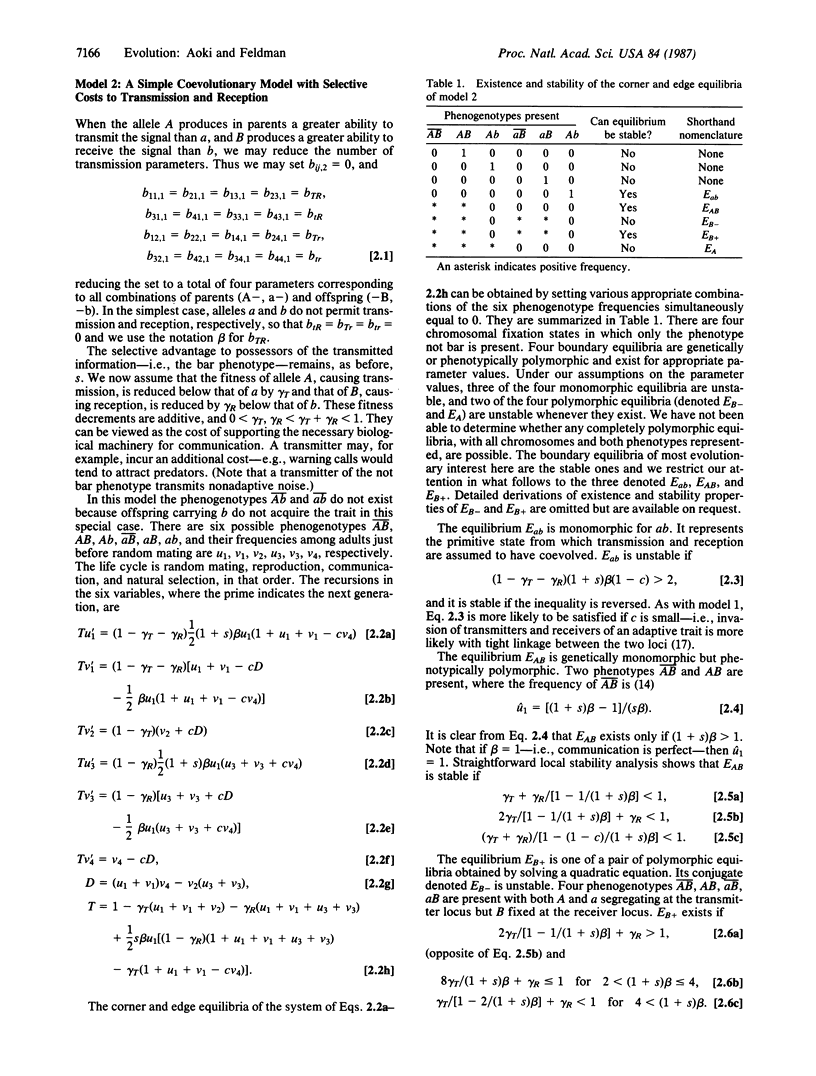
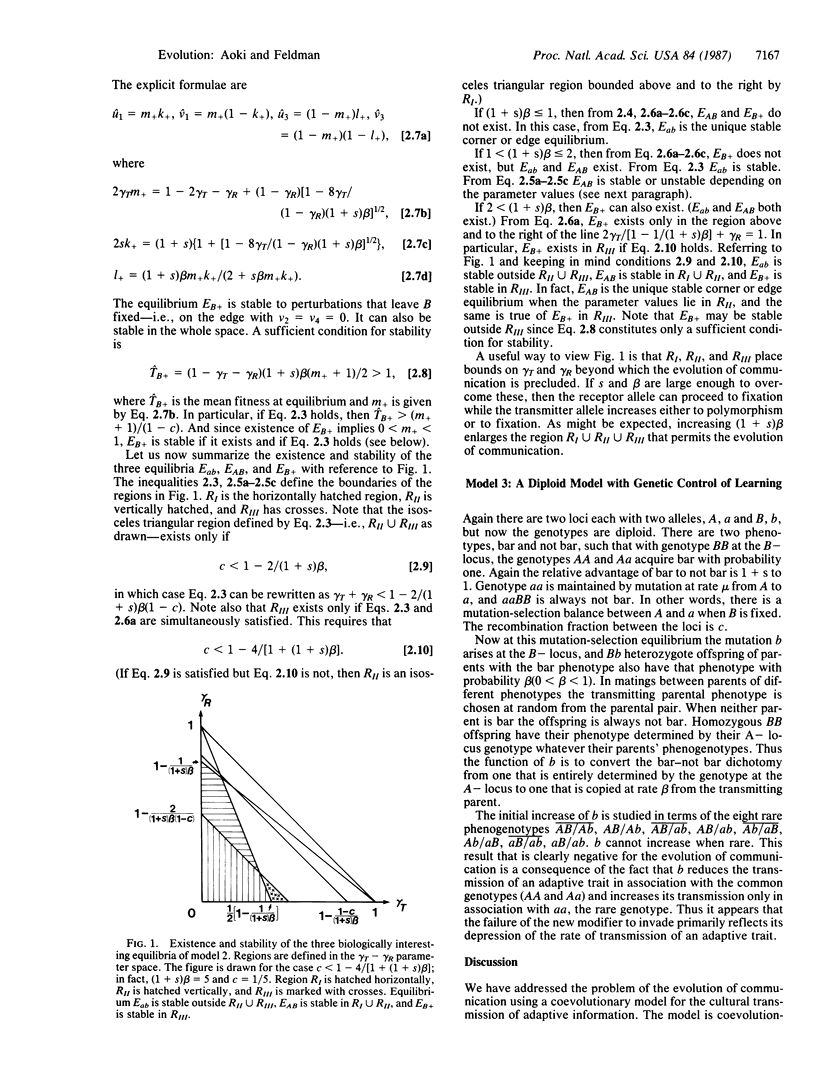
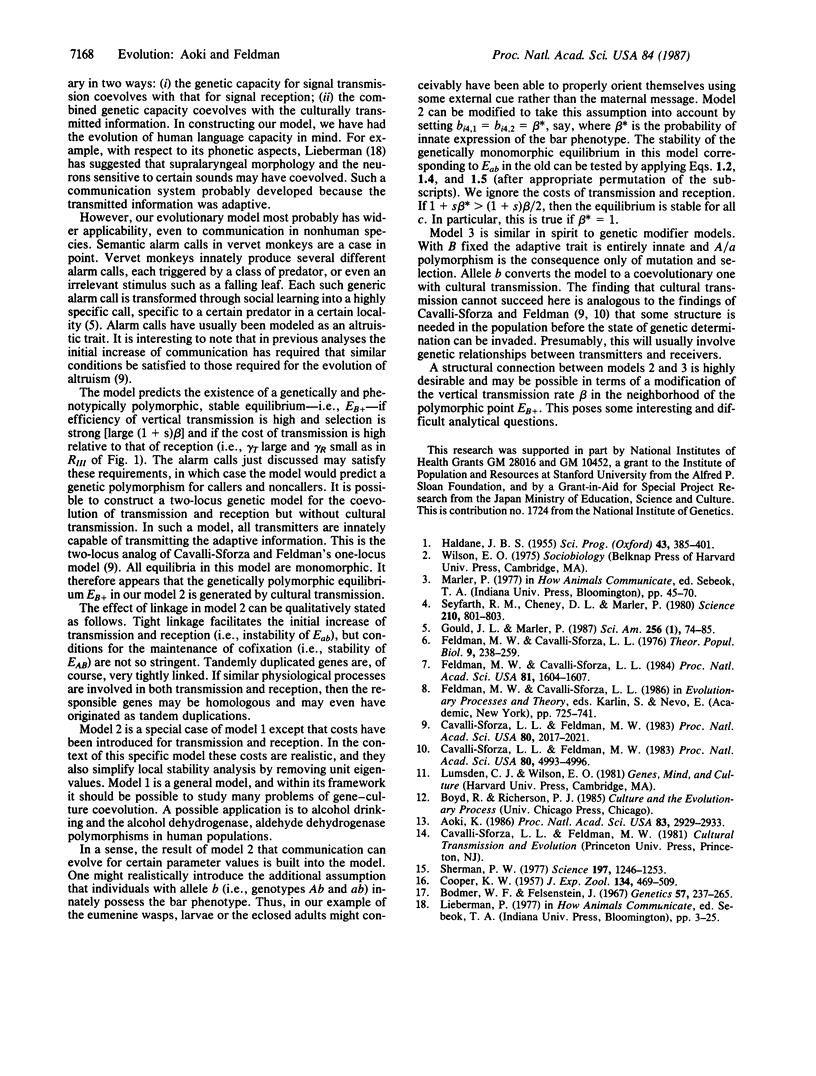
Selected References
These references are in PubMed. This may not be the complete list of references from this article.
- Aoki K. A stochastic model of gene-culture coevolution suggested by the "culture historical hypothesis" for the evolution of adult lactose absorption in humans. Proc Natl Acad Sci U S A. 1986 May;83(9):2929–2933. doi: 10.1073/pnas.83.9.2929. [DOI] [PMC free article] [PubMed] [Google Scholar]
- Bodmer W. F., Felsenstein J. Linkage and selection: theoretical analysis of the deterministic two locus random mating model. Genetics. 1967 Oct;57(2):237–265. doi: 10.1093/genetics/57.2.237. [DOI] [PMC free article] [PubMed] [Google Scholar]
- COOPER K. W. Biology of eumenine wasp. V. Digital communication in wasps. J Exp Zool. 1957 Apr;134(3):469–513. doi: 10.1002/jez.1401340305. [DOI] [PubMed] [Google Scholar]
- Cavalli-Sforza L. L., Feldman M. W. Cultural versus genetic adaptation. Proc Natl Acad Sci U S A. 1983 Aug;80(16):4993–4996. doi: 10.1073/pnas.80.16.4993. [DOI] [PMC free article] [PubMed] [Google Scholar]
- Cavalli-Sforza L. L., Feldman M. W. Paradox of the evolution of communication and of social interactivity. Proc Natl Acad Sci U S A. 1983 Apr;80(7):2017–2021. doi: 10.1073/pnas.80.7.2017. [DOI] [PMC free article] [PubMed] [Google Scholar]
- Feldman M. W., Cavalli-Sforza L. L. Cultural and biological evolutionary processes, selection for a trait under complex transmission. Theor Popul Biol. 1976 Apr;9(2):238–259. doi: 10.1016/0040-5809(76)90047-2. [DOI] [PubMed] [Google Scholar]
- Feldman M. W., Cavalli-Sforza L. L. Cultural and biological evolutionary processes: gene-culture disequilibrium. Proc Natl Acad Sci U S A. 1984 Mar;81(5):1604–1607. doi: 10.1073/pnas.81.5.1604. [DOI] [PMC free article] [PubMed] [Google Scholar]
- Seyfarth R. M., Cheney D. L., Marler P. Monkey responses to three different alarm calls: evidence of predator classification and semantic communication. Science. 1980 Nov 14;210(4471):801–803. doi: 10.1126/science.7433999. [DOI] [PubMed] [Google Scholar]
- Sherman P. W. Nepotism and the evolution of alarm calls. Science. 1977 Sep 23;197(4310):1246–1253. doi: 10.1126/science.197.4310.1246. [DOI] [PubMed] [Google Scholar]


